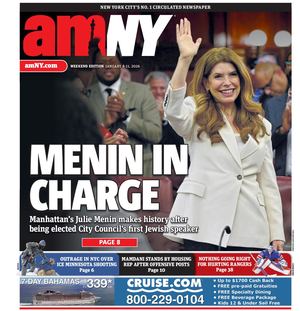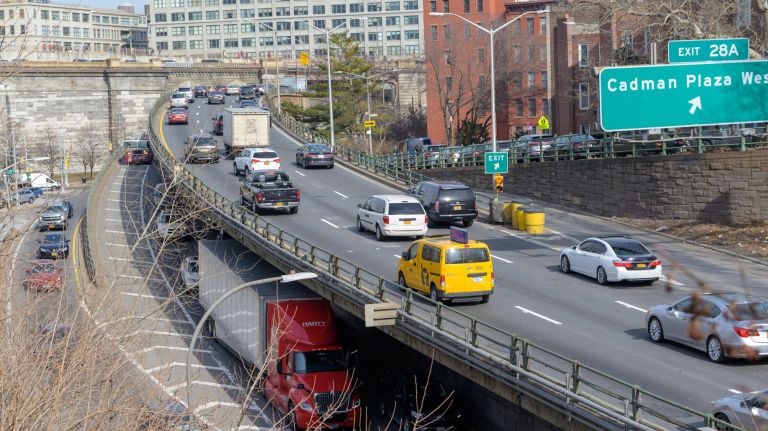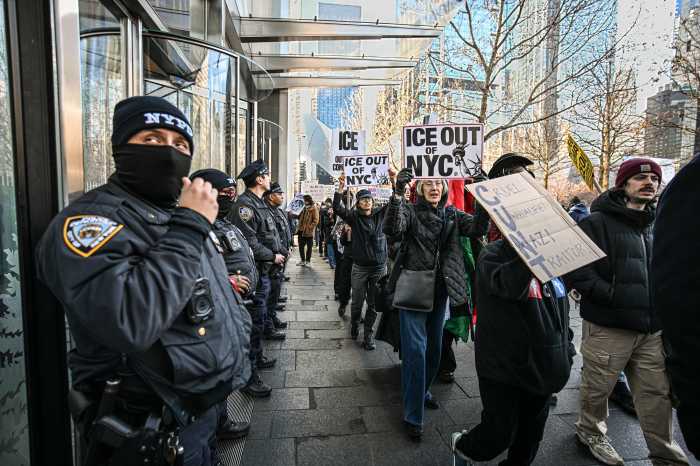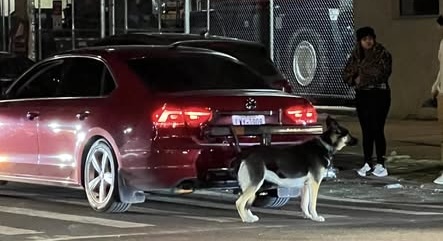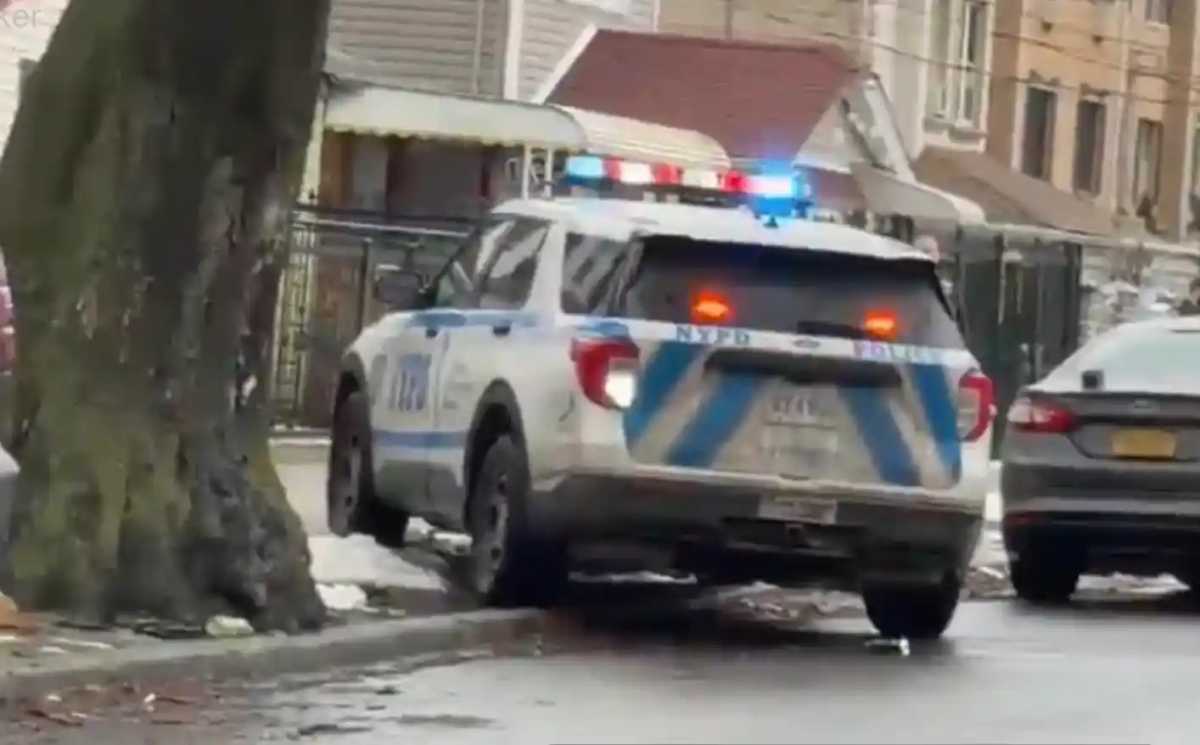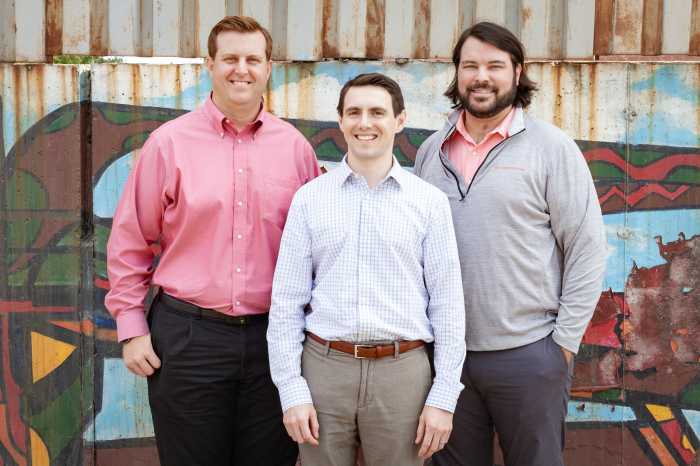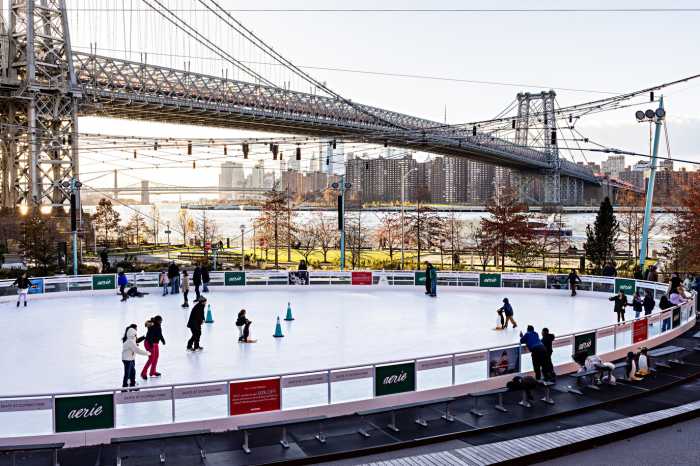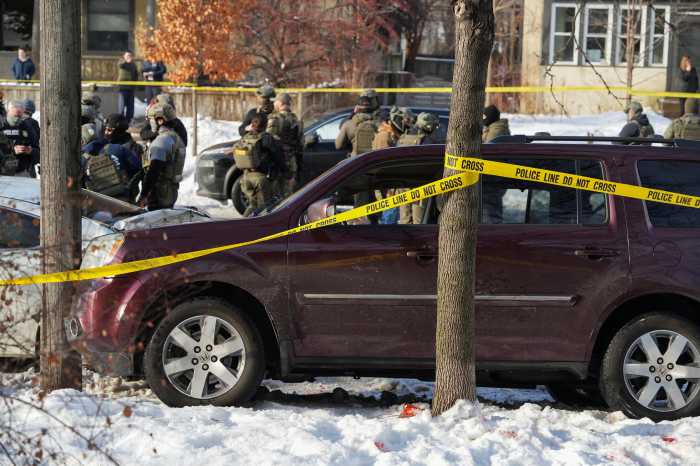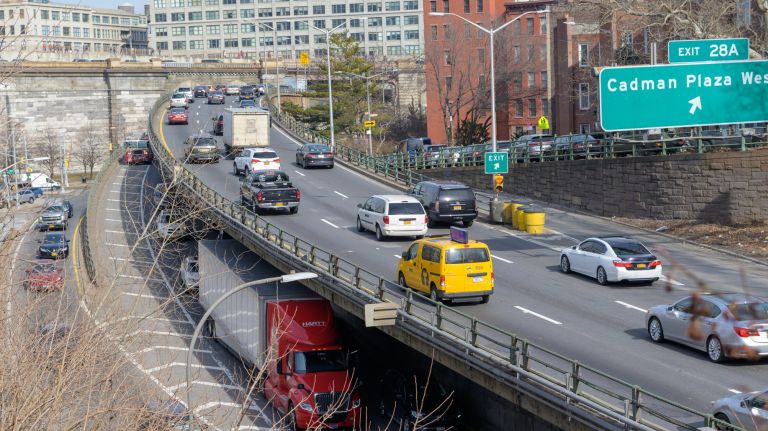
Since the city first unveiled its plans for a rehabilitation of the Brooklyn-Queens Expressway last fall, a question has resurfaced among officials and advocates: Why not re-conceive the loathed highway, rather than simply rebuild it?
With the aging span falling apart, city officials have warned that significant renovations must occur by 2026 to avoid instituting crippling weight restrictions. In response, the city has pitched two widely disliked options to rehabilitate the highway: Either snarl traffic with overnight work, or close the iconic Brooklyn Heights promenade for six years to make way for a temporary, six-lane highway at street level.
Some elected officials are eager to criticize Robert Moses, the car-focused master planner who built the BQE, and are framing the renovations as an opportunity to shrink the span to make way for more inviting public spaces.
Truck-only route with linear park

Last week, City Comptroller Scott Stringer became the latest politician to push a proposal to reduce the aging stretch of the BQE to serve fewer vehicles. In a letter to the city Department of Transportation, Stringer outlined a vision to reduce the lanes on a two-mile stretch, making way for a new linear park between the Brooklyn Bridge and Hamilton Avenue in Carroll Gardens.
“We put together this proposal that, I think, speaks to a different way of urban planning. Right now, conventional wisdom is: repair the BQE, but basically replace one superhighway with another superhighway,” Stringer said. “And we just think we could do better than that. The Robert Moses-centric planning process doesn’t have to be part of this.”
Under Stringer’s idea, that span of the BQE would become a truck-only route. Trucks would get access to one lane in each direction on the lowest level of the BQE’s triple cantilever, with a linear park running on the second level that sits below the Heights promenade.
Groups such as A Better Way NYC, which formed out of the backlash to the city’s proposals, and the Brooklyn Heights Alliance have endorsed Stringer’s plan. The Brooklyn Heights Alliance has proposed its own plan, as well.
Removing the BQE entirely
Earlier this month, City Council Speaker Corey Johnson issued a report to accompany his transportation-focused State of the City address that stated the city must explore “the removal of the BQE in its entirety.” During his speech, he put the 150,000 daily vehicles that travel over the BQE into the context of the city’s subway system.
“The Lexington Avenue subway line carries more passengers than that in a morning rush hour,” Johnson said. “We need to take a fresh look at the BQE problem . . . We shouldn’t assume that the best way forward is the old, car-centric way. We can’t change the past, but we can make choices that will lead us to a better future.”
City officials urged back in September that the elevated stretch of the BQE — built “on the cheap” in the middle of the 20th century, as DOT Commissioner Polly Trottenberg put it — must be repaired before weight restrictions end up diverting trucks off the highway and onto city streets.
Trottenberg said at the time it wasn’t possible to simply tear down the BQE, as the city relies so heavily on truck traffic. Among the daily BQE vehicles, about 25,000, or 16.3 percent, are trucks.
“For better or for worse, these Moses-built highways . . . now the city has grown around them and it’s not an option to just say we can’t deal with that traffic,” she said.
Other cities, like Seattle, have seen success closing highways without causing traffic Armageddon. When Seattle’s Alaskan Way Viaduct, which was serving 90,000 daily cars, closed in January, there was a negligible impact on commutes, according to The Seattle Times.
“If this works, we can do what other cities have done, looking at a new approach to planning,” Stringer said.
The city’s proposals predictably inspired intense backlash from the well-resourced residents of the tony Brooklyn Heights neighborhood, who were not willing to accept such a potentially long promenade closure or a temporary six-lane highway at street level. Even then-MTA Chairman and local resident Joe Lhota chimed in on Twitter to voice his disapproval in a quickly deleted tweet.
Adjacent temporary highway
The Brooklyn Heights Alliance has drafted local architect and planner Marc Wouters to design an alternative approach. Wouters’ proposal calls for the building of a temporary, two-tier highway west of the current triple cantilever and below the current promenade level.
Peter Bray, the executive director of the alliance, said that while he supported Stringer’s approach, it’s far from a fully formed idea.
“What we particularly like about the proposal is that the comptroller is doing a lot of creative thinking in terms of the role that the BQE could play in the long term, in terms of addressing the city’s transportation needs,” said Bray, who believes that shrinking the highway would be dependent on a congestion pricing plan for Manhattan that would potentially reduce traffic volumes.
“There would also have to be a careful study done on options and routes that car traffic would take,” he added, “so that it would not encourage people to get off into narrow streets in the Downtown Brooklyn area.”
City open to all options
Trottenberg said at a City Council hearing last week that the administration is evaluating all alternatives — including a “potential for demand reduction” should the state pass a congestion pricing proposal. The city expects to begin its environmental review process later this year, anticipating that it would take at least two years to complete, she said.
“When it comes to state of good repair and project delivery, no project is bigger and more complex than the BQE. As we know, this project is of great importance to the local communities and the region as a whole,” said Trottenberg. “The speaker, Comptroller Stringer and community groups have all called for a re-imagining of our approach to this project, and no option is off the table.”
